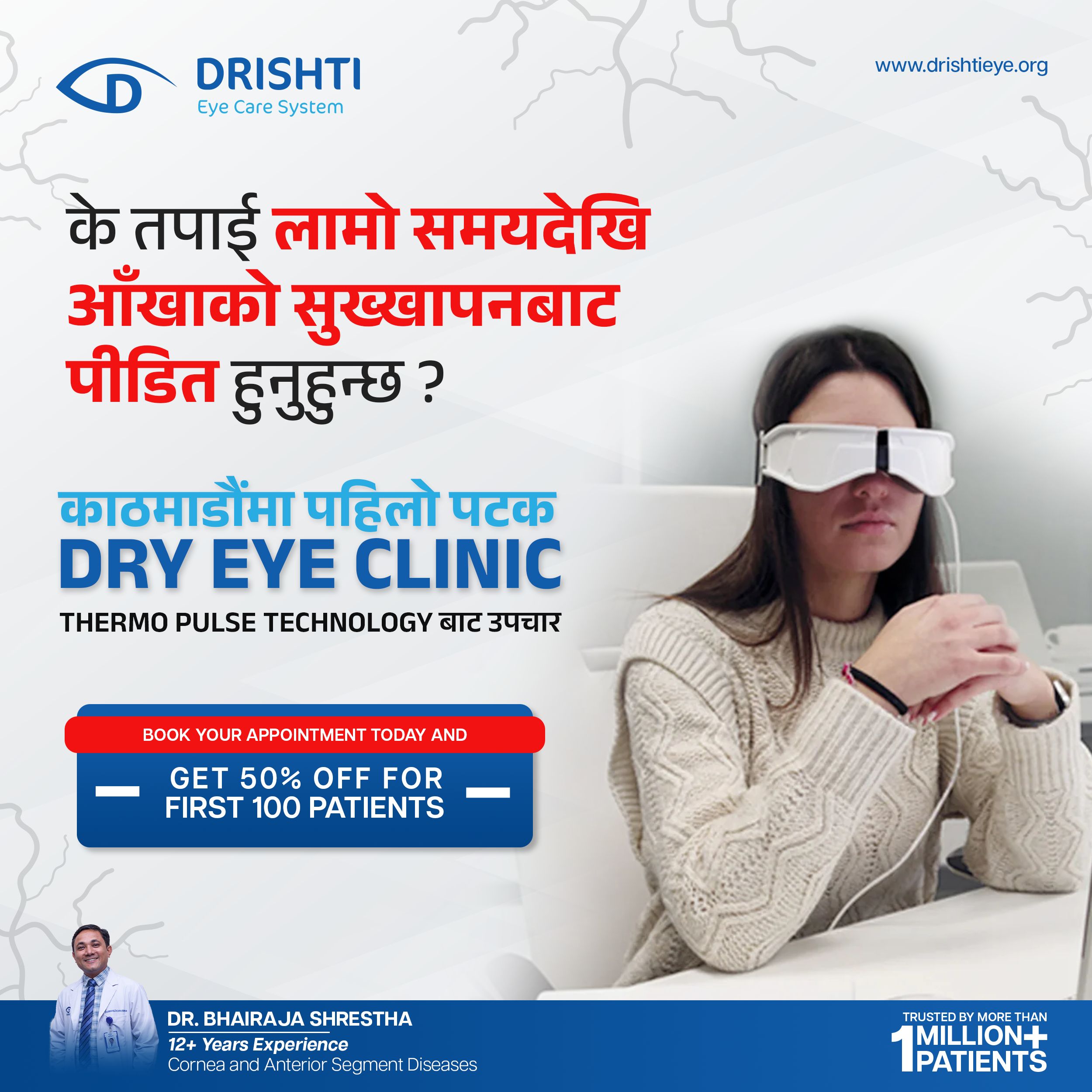Computer Vision Syndrome, also referred to as Digital Eye Strain, describes a group of eye and vision-related problems that result from prolonged computer, tablet, e-reader, and cell phone use. Many individuals experience eye discomfort and vision problems when viewing digital screens for extended periods. The level of discomfort appears to increase with the amount of digital screen use.
The most common symptoms associated with Computer Vision Syndrome (CVS) or Digital Eye Strain are
- Eyestrain
- Headaches
- Blurred vision
- Dry eyes
- Neck and shoulder pain
These symptoms may be caused by:
- Poor lighting
- Glare on a digitalscreen
- Improper viewing distances
- Poor seating posture
- Uncorrected vision problems
- A combination of these factors
The extent to which individuals experience visual symptoms often depends on the level of their visual abilities and the amount of time spent looking at a digital screen. Uncorrected vision problems like farsightedness and astigmatism, inadequate eye focusing or eye coordination abilities, and aging changes of the eyes, such as presbyopia, can all contribute to the development of visual symptoms when using a computer or digital screen device.
Many of the visual symptoms experienced by users are only temporary and will decline after stopping computer work or use of the digital device. However, some individuals may experience continued reduced visual abilities, such as blurred distance vision, even after stopping work at a computer. If nothing is done to address the cause of the problem, the symptoms will continue to recur and perhaps worsen with future digital screen use.
Prevention or reduction of the vision problems associated with Computer Vision Syndrome or Digital Eye Strain involves taking steps to control lighting and glare on the device screen, establishing proper working distances and posture for screen viewing, and assuring that even minor vision problems are properly corrected.
How is Computer Vision Syndrome, or Digital Eye Strain treated?
Solutions to digital screen-related vision problems are varied. However, they can usually be alleviated by obtaining regular eye care and making changes in how you view the screen.
EyeCare
In some cases, individuals who do not require the use of eyeglasses for other daily activities may benefit from glasses prescribed specifically for computer use. In addition, persons already wearing glasses may find their current prescription does not provide optimal vision for viewing a computer.
- Eyeglasses or contactlenses prescribed for general use may not be adequate for computer work. Lensesprescribed to meet the unique visual demands of computer viewing may be needed.Special lens designs, lens powers or lens tints or coatings may help tomaximize visual abilities and comfort.
- Some computer usersexperience problems with eye focusing or eye coordination that can’t beadequately corrected with eyeglasses or contact lenses. A program of visiontherapy may be needed to treat these specific problems. Vision therapy, alsocalled visual training, is a structured program of visual activities prescribedto improve visual abilities. It trains the eyes and brain to work together moreeffectively. These eye exercises help remediate deficiencies in eye movement,eye focusing and eye teaming and reinforce the eye-brain connection. Treatmentmay include office-based as well as home training procedures.
Viewing the Computer
Proper body positioning for computer use.
Some important factors in preventing or reducing the symptoms of CVS have to do with the computer and how it is used. This includes lighting conditions, chair comfort, location of reference materials, the position of the monitor, and the use of rest breaks.
- Location of computer screen – Most people find it more comfortable to view a computer whenthe eyes are looking downward. Optimally, the computer screen should be 15 to20 degrees below eye level (about 4 or 5 inches) as measured from the center ofthe screen and 20 to 28 inches from the eyes.
- Reference materials – These materials should be located above the keyboard and belowthe monitor. If this is not possible, a document holder can be used beside themonitor. The goal is to position the documents so you do not need to move yourhead to look from the document to the screen.
- Lighting – Position thecomputer screen to avoid glare, particularly from overhead lighting or windows.Use blinds or drapes on windows and replace the light bulbs in desk lamps withbulbs of lower wattage.
- Anti-glare screens – If there is no way to minimize glare from light sources,consider using a screen glare filter. These filters decrease the amount oflight reflected from the screen.
- Seating position – Chairs should be comfortably padded and conform to the body.Chair height should be adjusted so your feet rest flat on the floor. If yourchair has arms, they should be adjusted to provide arm support while you aretyping. Your wrists shouldn’t rest on the keyboard when typing.
- Rule of 20-20-20 – To prevent eyestrain, try to rest your eyes when using thecomputer for long periods. Rest your eyes for 15 minutes after two hours ofcontinuous computer use. Also, for every 20 minutes of computer viewing, lookinto the distance(preferably beyond 20 feet) for 20 seconds to allow your eyesa chance to refocus.
- Blinking – To minimize yourchances of developing dry eye when using a computer, make an effort to blink frequently.Blinking keeps the front surface of your eye moist.
Regular eye examinations and proper viewing habits can help to prevent or reduce the development of the symptoms associated with Computer vision syndrome.
Source : American Optometry Association





